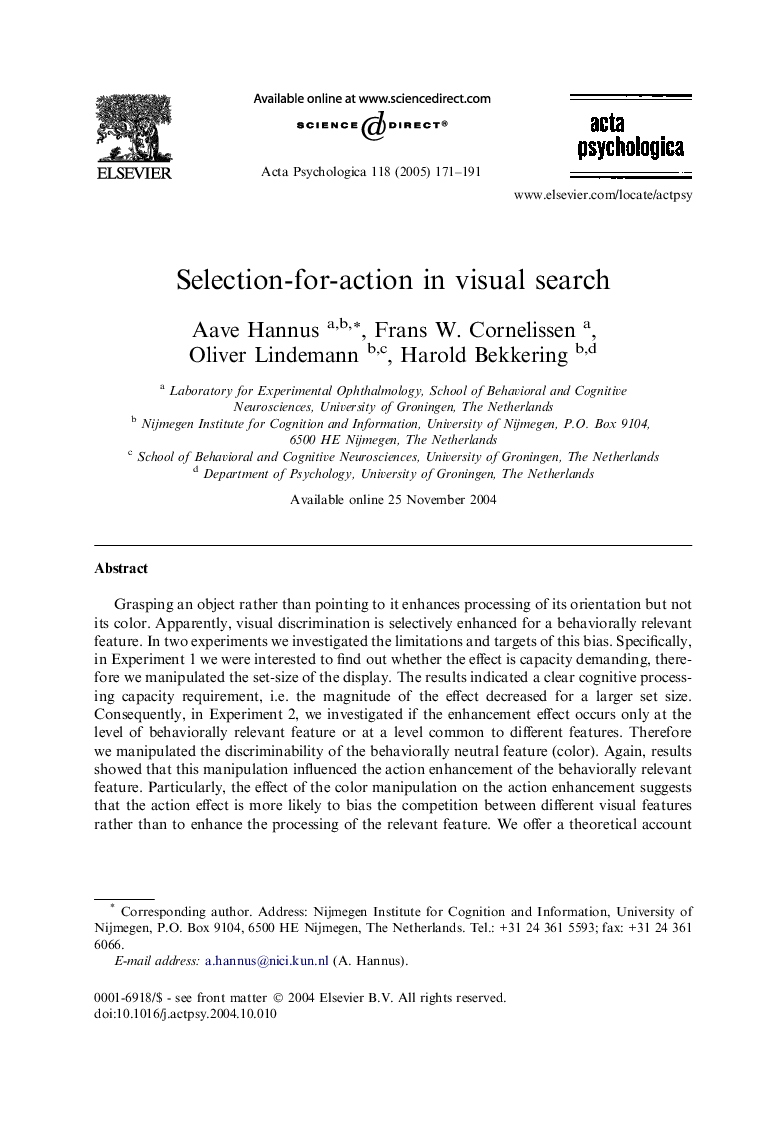| Article ID | Journal | Published Year | Pages | File Type |
|---|---|---|---|---|
| 9721986 | Acta Psychologica | 2005 | 21 Pages |
Abstract
Grasping an object rather than pointing to it enhances processing of its orientation but not its color. Apparently, visual discrimination is selectively enhanced for a behaviorally relevant feature. In two experiments we investigated the limitations and targets of this bias. Specifically, in Experiment 1 we were interested to find out whether the effect is capacity demanding, therefore we manipulated the set-size of the display. The results indicated a clear cognitive processing capacity requirement, i.e. the magnitude of the effect decreased for a larger set size. Consequently, in Experiment 2, we investigated if the enhancement effect occurs only at the level of behaviorally relevant feature or at a level common to different features. Therefore we manipulated the discriminability of the behaviorally neutral feature (color). Again, results showed that this manipulation influenced the action enhancement of the behaviorally relevant feature. Particularly, the effect of the color manipulation on the action enhancement suggests that the action effect is more likely to bias the competition between different visual features rather than to enhance the processing of the relevant feature. We offer a theoretical account that integrates the action-intention effect within the biased competition model of visual selective attention.
Related Topics
Life Sciences
Neuroscience
Cognitive Neuroscience
Authors
Aave Hannus, Frans W. Cornelissen, Oliver Lindemann, Harold Bekkering,
